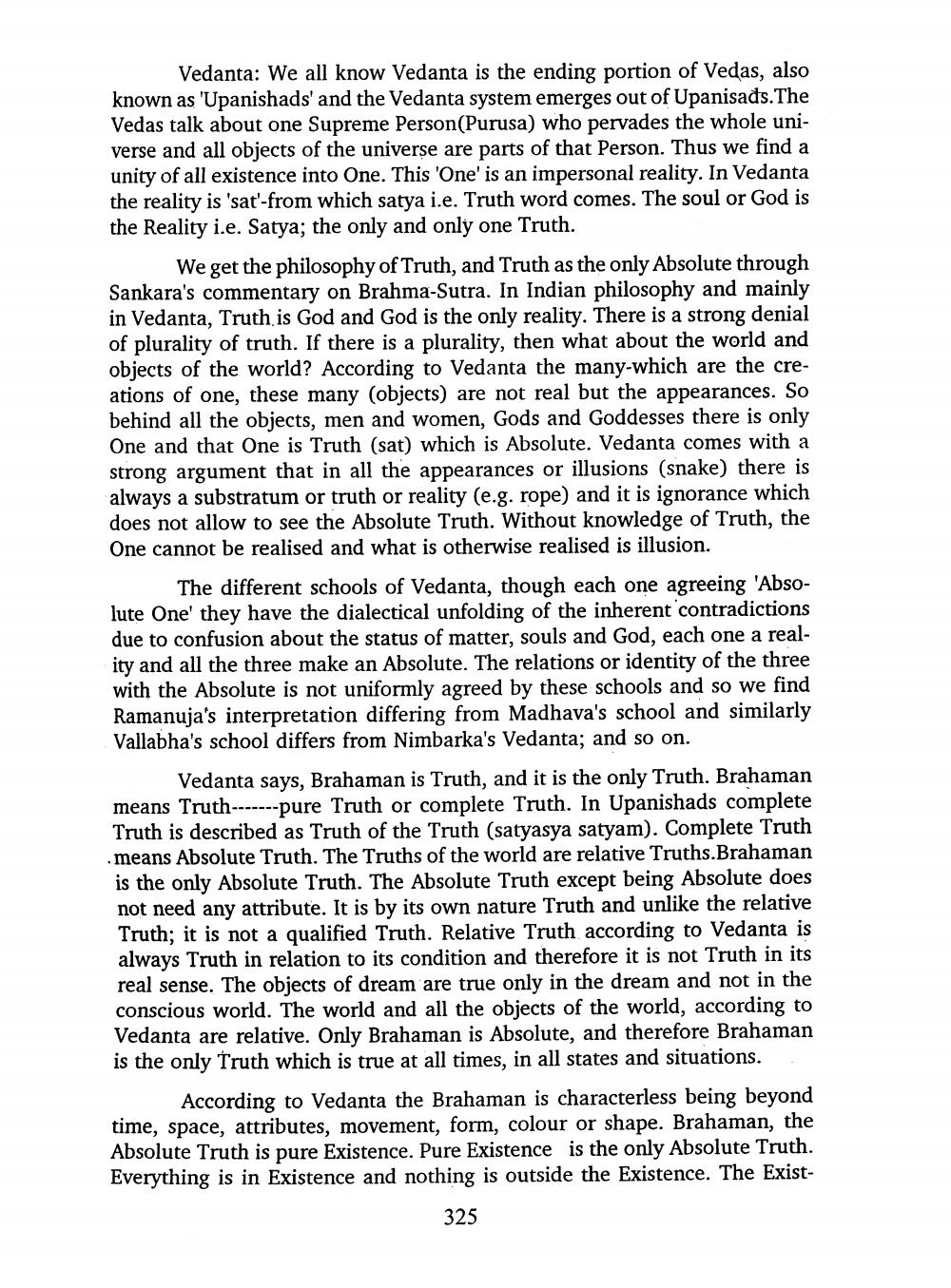________________
Vedanta: We all know Vedanta is the ending portion of Vedas, also known as 'Upanishads' and the Vedanta system emerges out of Upanisads. The Vedas talk about one Supreme Person(Purusa) who pervades the whole universe and all objects of the universe are parts of that person. Thus we find a unity of all existence into One. This 'One' is an impersonal reality. In Vedanta the reality is 'sat'-from which satya i.e. Truth word comes. The soul or God is the Reality i.e. Satya; the only and only one Truth.
We get the philosophy of Truth, and Truth as the only Absolute through Sankara's commentary on Brahma-Sutra. In Indian philosophy and mainly in Vedanta, Truth is God and God is the only reality. There is a strong denial of plurality of truth. If there is a plurality, then what about the world and objects of the world? According to Vedanta the many-which are the creations of one, these many (objects) are not real but the appearances. So behind all the objects, men and women, Gods and Goddesses there is only One and that One is Truth (sat) which is Absolute. Vedanta comes with a strong argument that in all the appearances or illusions (snake) there is always a substratum or truth or reality (e.g. rope) and it is ignorance which does not allow to see the Absolute Truth. Without knowledge of Truth, the One cannot be realised and what is otherwise realised is illusion.
The different schools of Vedanta, though each one agreeing 'Absolute One' they have the dialectical unfolding of the inherent contradictions due to confusion about the status of matter, souls and God, each one a reality and all the three make an Absolute. The relations or identity of the three with the Absolute is not uniformly agreed by these schools and so we find Ramanuja's interpretation differing from Madhava's school and similarly Vallabha's school differs from Nimbarka's Vedanta; and so on.
Vedanta says, Brahaman is Truth, and it is the only Truth. Brahaman means Truth-------pure Truth or complete Truth. In Upanishads complete Truth is described as Truth of the Truth (satyasya satyam). Complete Truth means Absolute Truth. The Truths of the world are relative Truths.Brahaman is the only Absolute Truth. The Absolute Truth except being Absolute does not need any attribute. It is by its own nature Truth and unlike the relative Truth; it is not a qualified Truth. Relative Truth according to Vedanta is always Truth in relation to its condition and therefore it is not Truth in its real sense. The objects of dream are true only in the dream and not in the conscious world. The world and all the objects of the world, according to Vedanta are relative. Only Brahaman is Absolute, and therefore Brahaman is the only Truth which is true at all times, in all states and situations.
According to Vedanta the Brahaman is characterless being beyond time, space, attributes, movement, form, colour or shape. Brahaman, the Absolute Truth is pure Existence. Pure Existence is the only Absolute Truth. Everything is in Existence and nothing is outside the Existence. The Exist
325




